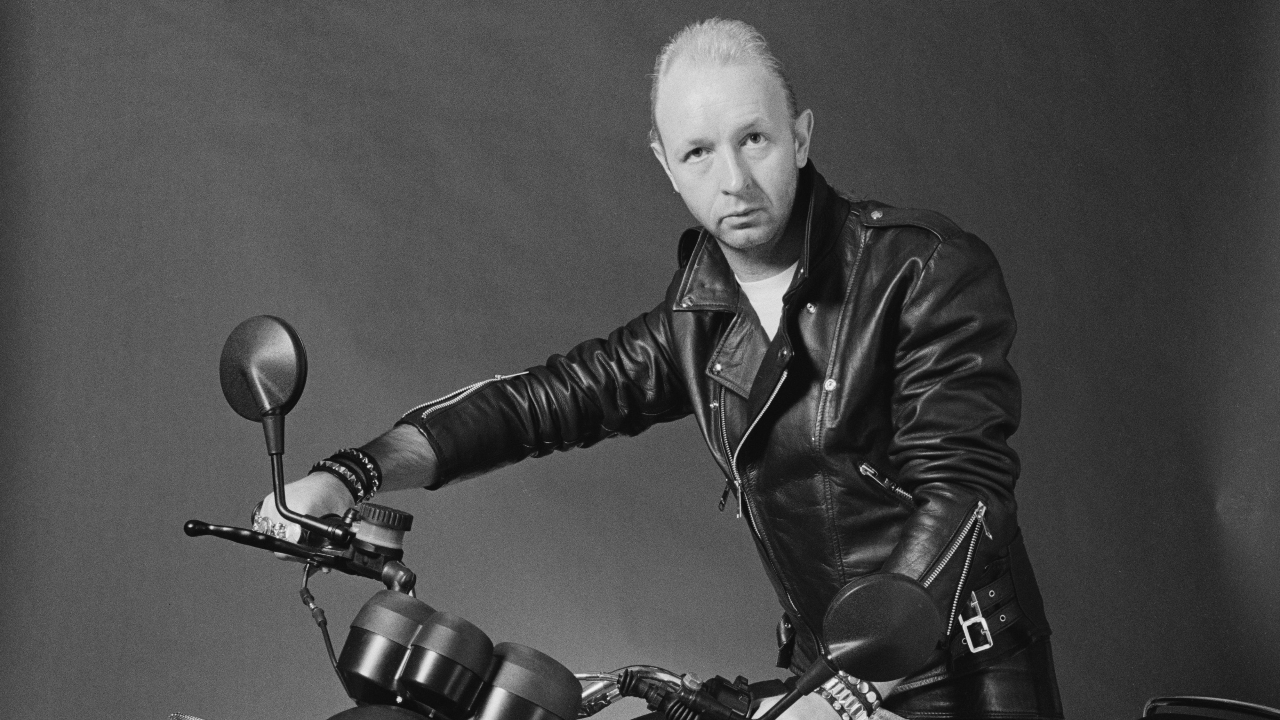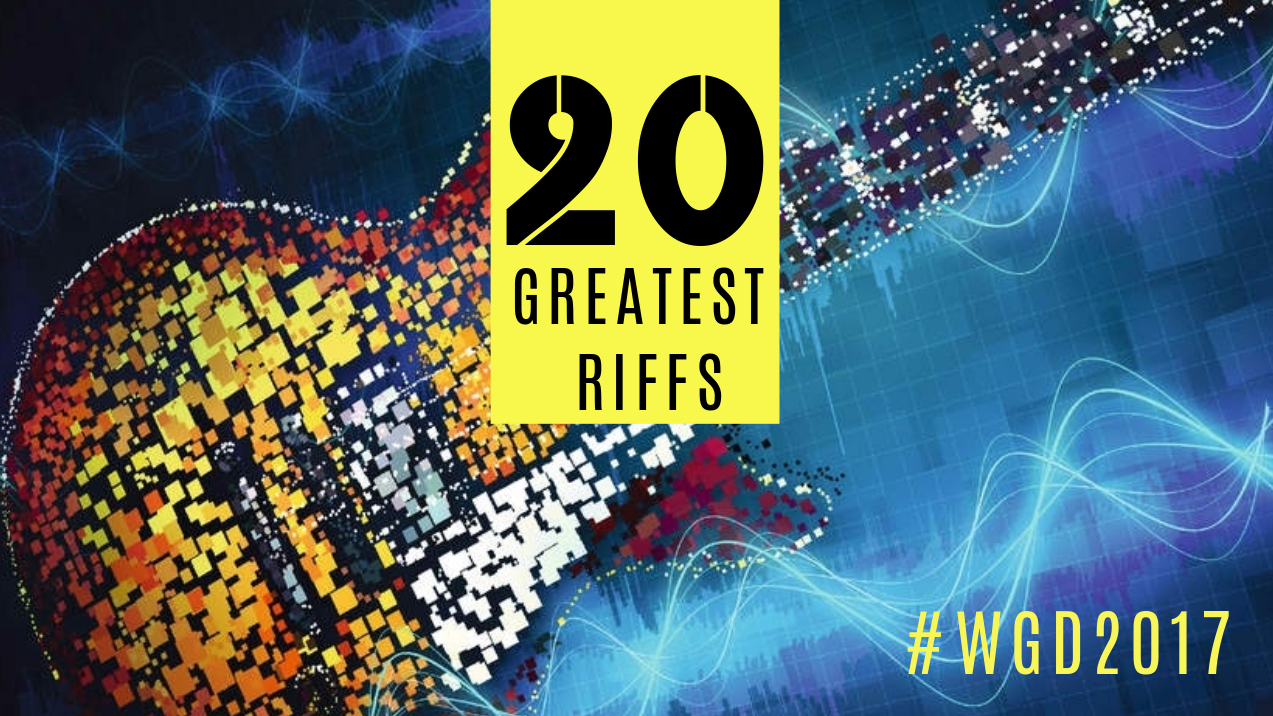
For this year’s World Guitar Day we asked you to voted for the Greatest Riffs Of All Time. With over 33,000 votes cast, here is the full list of the top 100. Below are the 20 all-time greatest riffs, the stories behind them, and even – in some cases – how to play them.
Interesting facts? AC/DC and Led Zeppelin both have three entries in the top 20, and singer Ozzy Osbourne appears on three of the tracks in the top 20. But the Kings Of The Riff are Metallica – the Bay Area thrash band that went on to be the biggest band in metal appear four times in the top 20 alone…
Got Apple Music? Listen to the playlist.

20) LA GRANGE ZZ Top
Ah-how-how-how-how. There’s a one-chord blues trick to this 1973 ZZ classic, which is musically inspired by a John Lee Hooker number, Boogie Chillen. But the vibe of the track is all ZZ. The storyline itself was inspired by a notorious brothel which was just outside the town of La Grange in Texas. Commonly known as the Chicken Ranch, this place of, erm, entertainment was immortalised still further in the movie The Best Little Whorehouse In Texas – and closed when the authorities got wind. Have mercy.
19) FOR WHOM THE BELL TOLLS Metallica
From the moment that Cliff Burton joined the band, Metallica began to appreciate that ‘speed’ and ‘heaviness’ were not the same thing. For Whom The Bell Tolls may have been played at a fraction of the speed of Whiplash, but its atmospheric, dark drama bestowed genuine gravitas upon the San Franciscan quartet for the first time. On Ride The Lightning’s spacious, dynamic third track the chorus riff is simplicity itself, based around palm-muted E-string chugging and fat, ringing power chords, but it has a weight and power that helped birth the ‘90s Metallica sound.
The latest news, features and interviews direct to your inbox, from the global home of alternative music.

18) VOODOO CHILD (SLIGHT RETURN)
The Jimi Hendrix Experience
Voodoo Chile is the freewheeling blues jam that ends side one of Electric Ladyland. Voodoo Child (Slight Return) is the one with The Riff. The album closer with The Riff that fades in on a wah-wah’d chug before exploding into apocalyptic menace. It’s a riff that sounds like a riot kicking off (and has been used in several movies to soundtrack exactly that).
If the riff sounded like the end of the world, the lyrics were built to match. The final line goes: ‘And if I don’t meet you no more in this world, then I’ll meet you in the next one/Don’t be late.’ They were the final words he ever sang in public.
17) BLACK DOG Led Zeppelin
The call and response riff of the opening track of Led Zeppelin IV was the perfect way to open one of rock’s most perfect albums. The almost impossible-to-copy rhythmic swing of the track (4⁄4 time set against 5⁄4) was a key indication of how far ahead of the rock game Led Zeppelin really were. Back in the day, bands such as Grand Funk Railroad were touted as being successors to Zep’s heavyweight crown, but their approach was devoid of the grace and timing of something like Black Dog. Genius.
16) HIGHWAY TO HELL
AC/DC
One of three entries from the Youngs in the top 20, Highway To Hell was the first song the band worked on for the album of the same name. The instantly arresting guitar-drum intro had been demoed with just Angus grinding away on guitar while Malcolm bashed at the drums. All was nearly lost when an engineer took the only cassette of it home, where his young son playfully unravelled it. Fortunately, Bon, who was always rewinding his own worn-out cassettes, put it back together the following day and the tune that was about to transform all their lives was restored.The fact that the intro sounded like Free’s All Right Now was not lost on producer Mutt Lange, who hired Free’s old engineer Tony Platt to help him mix the final edits. “He was looking for someone that would give it that kind of dry, punchy rock thing,” says Platt now. “That feeling of time and space.” Simple and timeless.
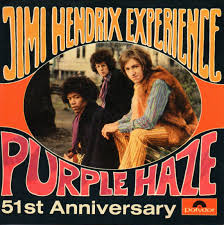
15) PURPLE HAZE
The Jimi Hendrix Experience
Purple Haze is one of the riffs that changed the world. The second single from The Jimi Hendrix Experience, it was the first Hendrix original released as an A-side. Where debut single Hey Joe was an anchored by a gentle melodicism, Purple Haze was brutal, angular, awkward. It signalled not just a new voice in music and guitar playing, but the arrival of a new kind of music.
Purple Haze featured the first use of Roger Mayer’s Octavia pedal. “The basis was the blues, but the framework of the blues was too tight,” said Mayer. “We’d talk first about what he wanted the emotion of the song to be. What’s the vision? He would talk in colours and my job was to give him the electronic palette which would engineer those colours so he could paint the canvas.”
Purple Haze’s frazzled psychedelia swept like a broom through the London of 1967 and blew the quaint niceties of the British blues out the window. Move over, Rover, and let Jimi take over.
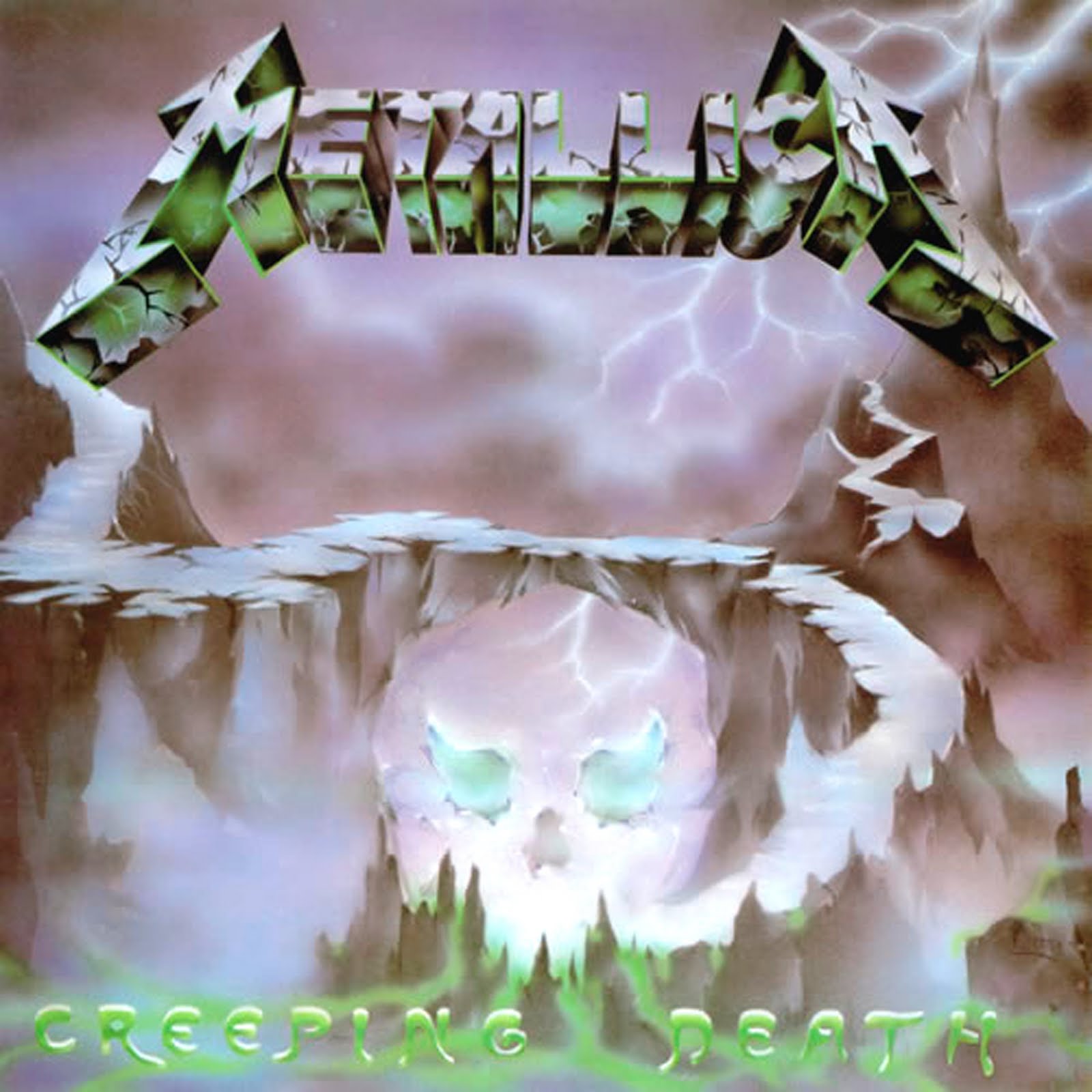
14) CREEPING DEATH Metallica
What is it that hits you hardest about Creeping Death? Take a second to think about it, because this thrash metal journey has plenty going for it. Is it that thunderous, thudding introduction that shoots adrenaline through your veins, getting straight to the point and setting the riotous tone from the very first note of the song? Maybe it’s that middle section that slugs away like body blows from a heavyweight boxer and includes what could very well be the most definitive gang vocal ever recorded? The epic scale and tone of the guitar solos? The dual guitar moments that added a sophistication and element of class to the “hunt and kill” rhetoric thrash had made its forte by 1984?
Whatever it was, it was apparent upon the release of Ride The Lightning that Creeping Death was unchartered territory for both Metallica and metal as a whole.
“Creeping Death was one of the first songs responsible for the musical growth of the band, I think,” reflects Kirk Hammett. “It was one of the first songs written for Ride The Lightning and it was a clear step in the right direction. It was as heavy as anything on Kill ‘Em All but on a technical level, we had put that much more into the writing and arrangement and we made it more demanding for ourselves, and it set the stage for the rest of the album.”
Though the song obviously goes down as a Metallica classic, dig a little deeper and you can find that Hammett’s former band Exodus had a tiny part to play in the creation of this metal masterpiece…
“James and Lars hammered that song out in a day and then called me down to the rehearsal space,” Kirk reveals of the song’s origin. “They got to the ‘Die by my hand’ riff and they started grinning at me and I laughed because I’d had that riff kicking around for so long and we’d used it in an Exodus demo, but it just worked in Creeping Death so well. I wrote it when I was 16 years old, definitely still in high school, and I remember thinking, ‘Wow, this is heavier than a lot of the bands that I listen to,’ and thought I’d touched upon something. It was the first riff I ever wrote that was in that sphere and I’ll always have tremendous affinity with it for that reason.”
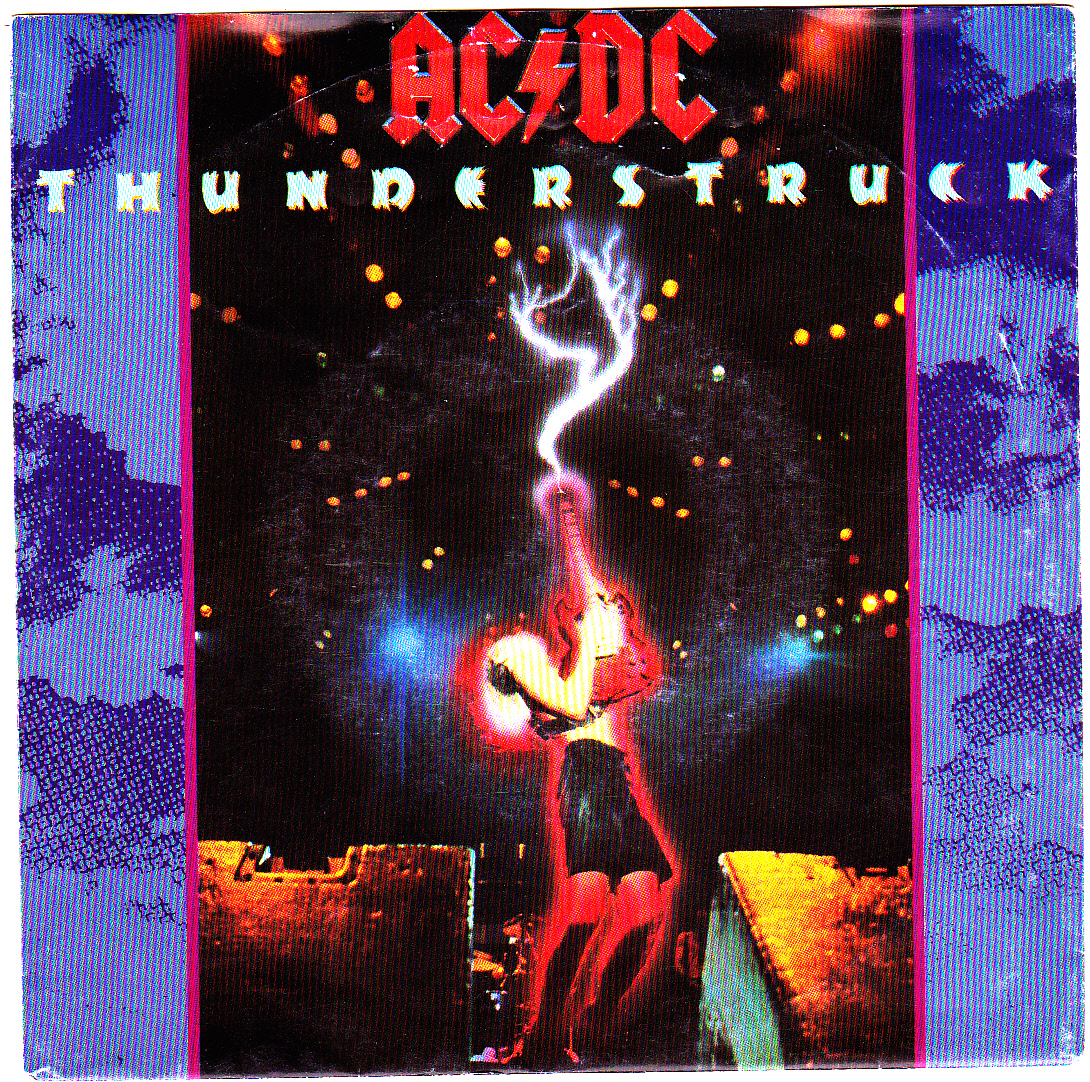
13) THUNDERSTRUCK AC/DC
For 1990’s The Razor’s Edge album producer Bruce Fairbairn, the man who had revitalised Aerosmith’s career three years before with Permanent Vacation, took Angus Young to one side: “I want you to sound like AC/DC when you were seventeen,” he said. Nowhere was that trademark sound captured better than on the album’s opener, Thunderstruck. Introduced by an electrifying Angus Young riff, comprised of hammer-on and pull-off fingering on an open B string, the track builds dynamically using terrace chants and new drummer Chris Slade’s brutal but simplistic poundings to emerge as a state-of-the-art stadium leveller. Not for nothing do the band Thunder use it as their intro music.
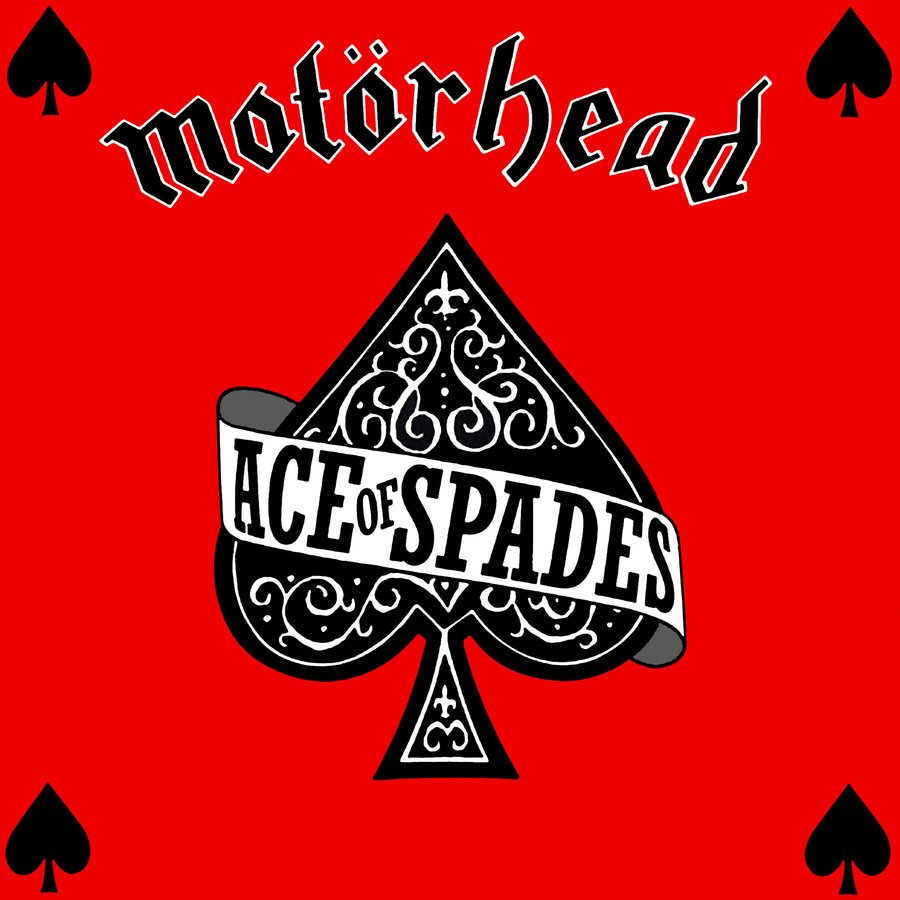
12) ACE OF SPADES Motorhead
Some bands will tell you about the great ordeals they went through to come up with their greatest works. The inner torment. The drug-fuelled inspiration. The divine light that guided them. Not Motorhead.
“We went down to Rockfield for a couple of weeks, got in the vodka and everything else,” says guitarist ‘Fast’ Eddie Clarke. “Unfortunately, Lemmy wasn’t too up for rehearsing in those days – he had a nice bird up there with him, so he was distracted. But Phil [drummer ‘Philthy Animal’ Taylor] and I used to like playing, so after we’d finished fishing and fucking about and God knows what, me and Phil would have a little bash. It gave us an opportunity to work out some riffs.”
Ace Of Spades was one of them. Pushed by producer Vic Maile, that steel-plated central riff was gradually burnished to perfection. “Vic kind of questioned what we were doing with the song,” says Clarke. “He made us look at that riff, so Lemmy and I started fucking around with it a bit. It was one of the only times we’d written in the studio.”
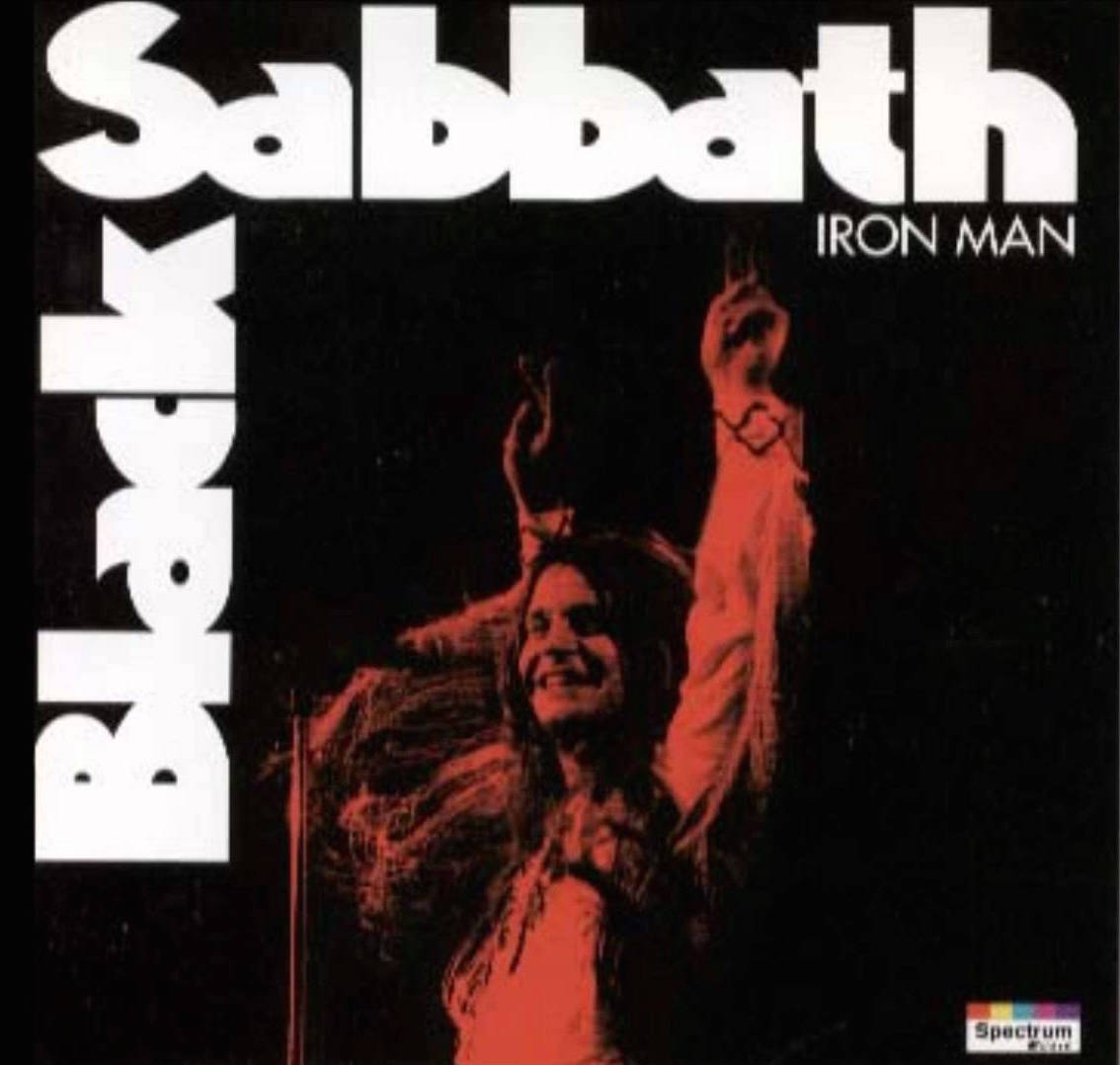
11) IRON MAN Black Sabbath
Now that’s a riff. Tony Iommi in excelsis. Black Sabbath had groove when they needed to, but heavy metal really came into its own when it took the roll out of rock’n’roll. Iron Man is like someone looking at Led Zeppelin’s fancy dan folk-and-blues genre-mashing complexity and going… Nah. Get a load of THIS! Defiant and deathly cool, it’s textbook Route One riffing from the Metal Master.
The song, written by bassist Geezer Butler, is not named after the Marvel character of the same name. And it could have been called something very different. “I can’t exactly recall what Ozzy said,” Geezer told Classic Rock, “but it was something like: ‘Why don’t we do a song called Iron Man, or maybe Iron Bloke’.”
- Led Zeppelin: The Story Behind Led Zeppelin II
- Bullets, bikers & burnout: Jimi Hendrix's last gig
- The Complete AC/DC Story - in the shops now!
- Metallica: On the road with metal's biggest band
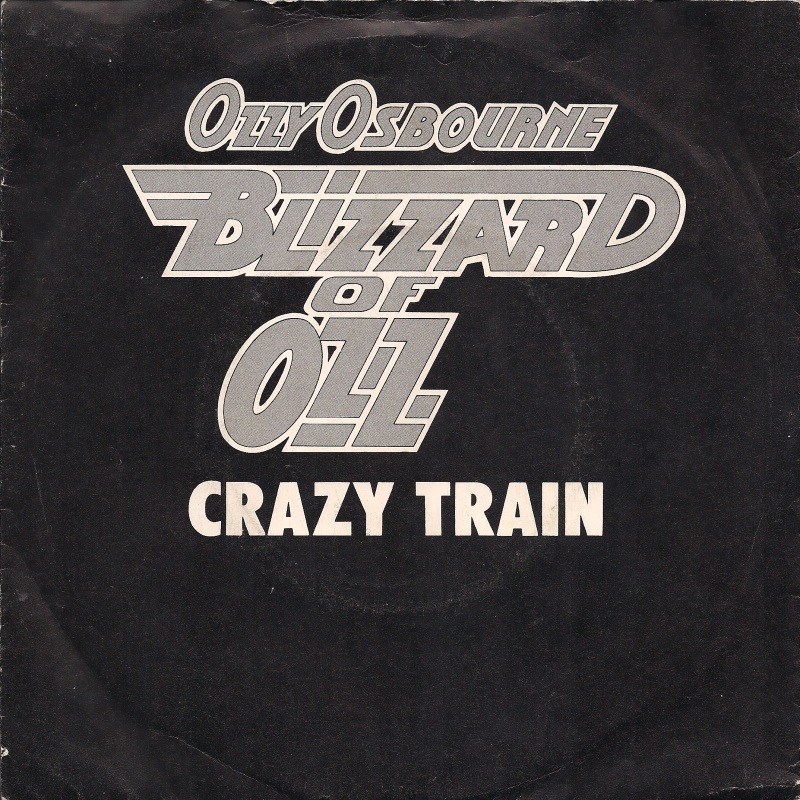
10) CRAZY TRAIN Ozzy Osbourne
Ladies and gentlemen: meet Randy fucking Rhoads.
Greg Leon was a young LA guitarist when he met Randy Rhoads backstage at a Quiet Riot and Van Halen concert in 1976. “I’m 17 and I’m the hotshot guitar player in Glendale. But I saw Randy and went: ‘Oh, man!‘,” says Leon. “He just had that aura about him.” When Rhoads left Quiet Riot, he recommended Leon as his replacement. The grateful Leon repaid the favour by later helping Randy write what would become one of his signature riffs with Ozzy Osbourne: Crazy Train.
“We were hanging out, and I showed him the riff to Steve Miller’s Swingtown,” he says. “I said: ‘Look what happens when you speed this riff up’. We messed around, and the next thing I know he took it to a whole other level and end up writing the Crazy Train riff.”
Having been ousted from Black Sabbath, Ozzy’s first solo single had to prove that he was still worthy of his Prince Of Darkness title. Randy Rhoads was the sideman he needed. Crazy Train fused a bass line reminiscent of Papa Was A Rolling Stone with one of metal’s greatest guitar riffs and solos.
“I wish I’d written Crazy Train,” Bowling For Soup’s Jaret Reddick told us, “because I love the overall guitar aspect to it. It’s the song that got me into music. It’s the reason I asked for a drum set and started listening to metal music. And it’s funny because when I was a kid Ozzy was the Prince of Darkness and the devil, and now you hear Crazy Train at every sporting event and you have kids singing it in commercials on television. It’s a song that draws everybody together worldwide. That’s crazy.”
9) PARANOID Black Sabbath
Black Sabbath’s Paranoid was a full-stop to the 60s and the start of something truly extraordinary.
It’s fitting that Paranoid topped the UK album charts in the first year of a new decade. The eight tracks created by the Birmingham four-piece put a definitive musical full stop to 1960s hippy ideals propagated by Haight-Ashbury, free love and flower power. The Vietnam War had sapped the naïve optimism young people had felt during much of the previous decade. The mood was changing, getting darker.
As vocalist Ozzy Osbourne put it in his typically laconic manner, “Be sure to wear a flower in your hair. What’s all this flower shit? I’ve got no shoes on my feet.”
Paranoid came from an album that’s unashamedly built on a bedrock of riffs, riffs and more riffs – but the song itself was written as filler at the last minute. “The producer said, ‘We haven’t got enough songs. We need another three minutes’,” remembered Tony Iommi. “So Paranoid was made up there and then. It was just a throwaway thing. While everybody popped out for a bite to eat, I came up with this riff.”
Rodger Bain (producer): “I remember saying, ‘That’s pretty good. What is that?’ And sort of getting disbelief. They said, ‘We’re just pissing around.’ I said, ‘Well, that’s great – let’s do it!’”
“It was about 1:30 in the afternoon and Tony had the riffs,” says Geezer Butler. “By 2:00 we had Paranoid exactly as you hear it on the record.”

8) KASHMIR Led Zeppelin
“I wish we were remembered for Kashmir more than Stairway To Heaven,” Zeppelin singer Robert Plant once said. “It’s so right; there’s nothing overblown, no vocal hysterics. Perfect Zeppelin.”
All these years later, it seems that he’s got his wish. Zep’s second appearance in your top 10 is a musical and metaphorical drive toward some irresistible far-off horizon (utilising the same signature DADGAD tuning that guitarist Jimmy Page had previously used to create such memorable showcases from his repertoire as White Summer and Black Mountain Side), Kashmir encapsulated Zeppelin’s multi-strand approach to making rock music: part rock, part funk, part African dust storm.
Page’s ascending chords build and then descend epically. The song is amazing. The guitar part is great. But is it even really a riff?
7) ENTER SANDMAN Metallica
By 1990, Metallica had been through the wringer. From their beginnings as a Bay Area thrash band with as much interest in vodka as they did success, they’d lost a member (bassist Cliff Burton) and redefined a genre. But there was a feeling in the camp that if they REALLY wanted to up the ante – if they wanted to ape the success of the likes of Guns N’ Roses and Def Leppard – things needed to change.
During the 240-odd nights of the …Justice For All tour, guitarists James Hetfield, Kirk Hammett, and bass player Jason Newsted compiled what they called The Riff Tape – a collection of riffs that would form the basis of Metallicaʼs next studio album. The first riff on The Riff Tape was one that Kirk Hammett had come up with.
“I tried to write the heaviest thing I could think of,” Hammett said later. “I was all fired up…” He certainly was. The riff in question would become the basis of what remains the bandʼs most famous song, Enter Sandman.
“It had this first part and a tail. I said make the first part a three [repeated three times], and then the tail,” Ulrich explained with a smile. “Could have been a whole different story [if he hadnʼt]. Could have still been living in the East Bay…”
Producer Bob Rock put the band through their paces, demanding the best. The end results were mixed in New York. Enter Sandman took 10 days.
It was worth all the hard work. That riff signalled a new era. The single sold over one million copies in the US.
6) SWEET CHILD O’ MINE Guns N’ Roses
“Yeah, yeah, BUT IS IT EVEN A RIFF?” Well, according to the dictionary, a riff is “a short repeated phrase in popular music and jazz, frequently played over changing chords or harmonies or used as a background to a solo improvisation”. So, uh, yeah. Total Guitar magazine described the perfect riffs as “short, repeatable and memorable enough to form a standout guitar hook” – and that is Sweet Child O’ Mine all over.
Slash once called his chiming ‘circus theme’ intro “a joke”, but the combination of it, Izzy Stradlin’s bold open chords and Axl Rose’s tender, love-struck poetry to then-girlfriend Erin Everly was pure sunshine-streaked musical alchemy. “It’s the first positive love song I’ve ever written,” admitted Axl. “But I never had anyone to write anything about before.” Bless. It’s a riff even your grandmother will know.
After they’d finished recording debut album, Appetite For Destruction, manager Alan Niven thought it could go gold – half a million sales. Producer Mike Clink thought Sweet Child O’ Mine was Guns N’ Roses’ secret weapon: a potential hit single and told A&R guy Tom Zutaut that Appetite would sell two million. Zutaut disagreed: he predicted five million. Zutaut hassled MTV to play the Sweet Child O’ Mine video. They finally did, late one night – and their switchboard lit up. The success of the song – propelled by that riff – took the album into the charts.
It sold 30 million albums and became the biggest-selling debut of all time.
5) MASTER OF PUPPETS Metallica
Master Of Puppets was bass player Cliff Burton’s favourite song from the album of the same name – and the much-missed bassist knew a thing or two about brutal rockers. The fact that this is Metallica’s most played live song of all time pays testament to its durability. Amazingly, the little pushes that appear throughout the tune do nothing to dampen the song’s groove right up to the point where the band break off and move into a slow, Iron Maiden-esque mid-section. They then rev up into a monstrous chug, and follow it with another insane-sounding solo. With so much shit going on, this should come over as a mess. It doesn’t. It’s magnificent.
Is it Metallica’s greatest riff? We don’t think so, but you voted for it and it’s not hard to see why: those opening notes and descending lines announced a the arrival of a new kind of metal. Remember when you heard Black Sabbath and you thought, yeah, it’s heavy but it’s sooooooooo. Slooooooooooowwwww? Master was like Sabbath played by the Ramones.
4) WHOLE LOTTA LOVE Led Zeppelin
Zep’s debut album was released in the US in January 69 and quickly climbed the Billboard chart off the back of their debut tour there.
The follow up, Led Zeppelin II, was a twisted, swaggering beast of a record, born out of the experiences the four-piece (Page, along with singer Robert Plant, drummer John Bonham and bassist John Paul Jones) were gaining from being part of, to coin a Spïnal Tap-ism, a living, breathing rock band on the road.
Whole Lotta Love – the song that would soon become their onstage anthem – led by Page’s distinctive, stuttering guitar riff that would later change the face of rock forever. As iconic and as instantly recognisable as Smoke On The Water – and equally as likely to top polls to find the greatest guitar riff – Whole Lotta Love is a brooding, blistering, brute of a riff, that works not just because of Jimmy Page’s ability as a player, but also because of his skills as a producer and arranger.
“Jimmy was an excellent producer,” says Led Zeppelin II engineer Eddie Kramer. “When he and I mixed Whole Lotta Love we just flayed around the console, twiddling every knob we could. We somehow managed to stretch our limitations and create an effective sound. Working with Jimmy Page was a lot different to working with Jimi Hendrix… apart from the fact they were both influenced by the blues, and they were both able to alternate between playing delicately and intensely. Page usually didn’t go for the blasting, huge wall of sound, he went for a more refined approach.”
3. BACK IN BLACK
AC/DC
There are rock songs that appeal to metal fans. And there are metal songs that appeal to rock fans. Then there is Back In Black – a rock and metal song that appeals to everybody, from dads to dudes, to little old ladies beating noisy kids over the heads with their sticks – and it all hangs on that monumental, no-nonsense, three-chord monster of a riff.
Some say it has even been known to raise the dead. Or, as that lifelong AC/DC aficionado Slash once said: “Man, Back In Black would make a dead man come!”
Serious. That monumental, tank-like riff booming like a giant robot lumbering towards you across a dark, lightning-forked horizon. That voice, like Godzilla gargling with rusty nails. Those drums, like hammers pounding into your frontal lobe. Case closed, right?
And yet it so nearly didn’t happen.
Conceived before the rest of the album that was eventually named after it, Back In Black was what happened when AC/DC auditioned Brian Johnson, the guy who would replace the recently-deceased Bon Scott.
He recalled: “They said, ‘We got this one song, we got a riff and we’re gonna call it Back In Black, but that’s all we’ve got. It’s a tribute to Bon. But we haven’t gotten any words and all we’ve got is… [humming the now famous, grenade-throwing riff].’
“That’s all it was. I went, ‘That’s it?’ And they said, ‘Yeah, well. Could you sing the words ‘back in black’?’” Grabbing the mic, Jonno waited for them to count in and begin playing the riff again, then just started screaming. You know by now what came out.
The Young brothers, guitarists Malcolm and Angus, looked at each other. Malcolm said: “Do that again.” They began playing and Jonno did it again, only louder this time: “Back in black!” And, just to keep the vibe going and because it was the first rhyme that came into his head, added, “I hit the sack!”
The brothers put down their guitars and Malcolm said, “Right, let’s sit and talk.” It was the beginning of one of the greatest partnerships in rock: Malcolm’s precision-engineered rhythms, Angus’s blood-and-guts soloing, Brian’s sandpit vocals, the rock-steady drums of Phil Rudd and the head-banging bass of Cliff Williams.
Or, as Metallica’s Lars Ulrich once put it: “The most awesome fucking sound in rock before it turned into heavy metal.”
Even Malcolm, always the hardest member of the band to please, got excited. Listening later to the finished mix he exclaimed, “Fucking hell, this is a monster!” He wasn’t wrong.

2. THE TROOPER
Iron Maiden
If you don’t love The Trooper by Iron Maiden then there’s a strong chance you’re looking at the wrong website, buddy. It’s one of heavy metal’s quintessential guitar anthems and still makes us gallop around the room like a hobby horse fetishist.
Taken from 1983’s Piece Of Mind album, it reached number 12 in the UK singles chart and has been a staple part of Iron Maiden’s live set ever since – seriously, how many times have we seen Bruce waving the Union flag around his head?
Yeah, Maiden have written heaps of killer riffs over the years, but really it’s The Trooper that stands out above all others. Under pressure to capitalise on 1982’s all-conquering Number Of The Beast album, the opening riff of the second single from Piece Of Mind set everyone’s mind to rest.
The Trooper quickly established itself as one of the heaviest pieces of artillery in Maiden’s already anthem-stacked catalogue, hung on that immense, rumbling monster of an opening riff. Maiden were already proving to be masters of melodic yet technically dazzling guitar work, but this was something else completely. There’s no build-up or warning to what is about to happen; just a smash of a snare and we’re in, swept forth by Dave Murray and Adrian Smith’s syncopated soaring, carrying the listener into the heat of battle before a word has even been spoken. It’s a riff to live and die by. A riff to win wars with, dammit. By the time Bruce kicks into gear, verbally threatening the track’s unnamed antagonist’s very mortality, there is no doubt to be had whatsoever that we have a classic on our hands. Frankly, the only excuse to not bang your head like a madman to this song’s most iconic of riffs is if you’re Anne Boleyn.
Perfectly executed musical dynamism? Oh yes. Responsible for hundreds of millions of spilt pints the world over? No doubt. Metal as a motherfucker? Don’t you ever forget it. The Trooper is Iron Maiden in a nutshell; bold, brash, pompous and utterly, utterly glorious.
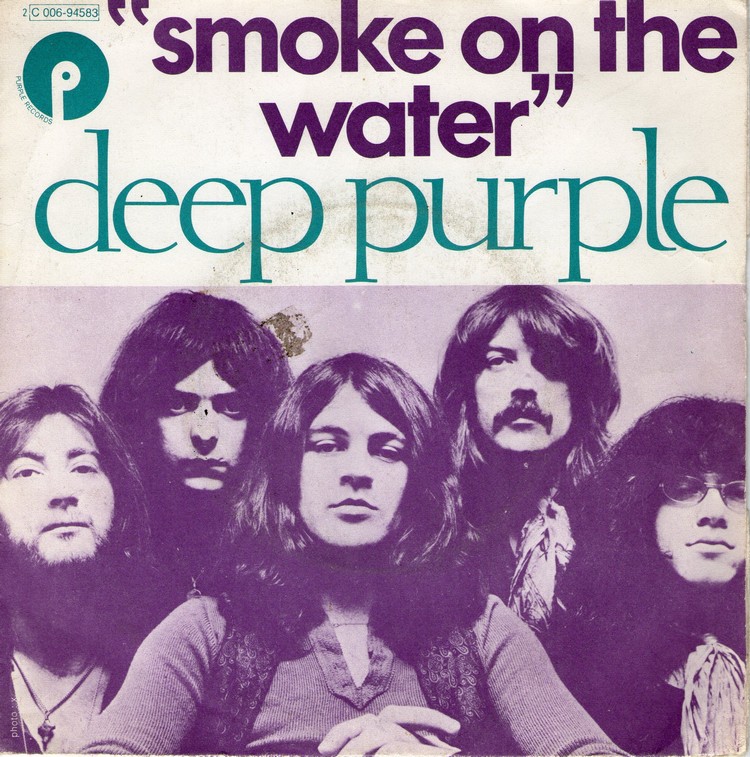
1. SMOKE ON THE WATER
Deep Purple
I mean, of course. Of COURSE it is. Smoke On The Water is noise playing in your head when someone says the word “riff”. It’s the solid foundation propping up rock music, the bedrock of every rock and metal band that followed. It’s slow, it’s simple, it’s a slouching rough beast and it’s heavy as hell and naggingly catchy. It invented The Church Of The Riff and its worshippers are plenty.
“The beauty of the riff is that it isn’t very difficult,” says Joe Satriani. “It hits most budding musicians with the overwhelming thought that it is so elegantly simple and yet somehow they haven’t come up with it before. It’s perfect.”
“I think Smoke On The Water and [Black Sabbath’s] Iron Man were the first two riffs I learned,” says Zakk Wlyde. “Because with Smoke you can play it with just four notes on the low E string. It’s like Stairway To Heaven with Zeppelin or Free Bird with Skynyrd – that’s your starter kit right there. When you think about the architects of our world, you think Cream with Sunshine Of Your Love, which is probably the first real heavy metal riff, and then Hendrix, then Purple, Zeppelin and Sabbath. That’s the roots of the genre right there.”
Not that Blackmore played on the low E string. “The great thing about his playing on Smoke On The Water is that he’s finger picking,” says the Flaming Lips’ Wayne Coyne, whose band covered the track. “It’s not a typical heavy metal thing. It’s almost as if he’s saying, ‘Hey, I’m a cool guitar picker, not a hamfisted dude.’”
Metallica drummer Lars Ulrich’s first gig was a Deep Purple show. What he saw that night changed him forever. His take on Smoke is simple: “It’s one of the greatest rock songs of all time and certainly the definitive hard rock riff. I don’t play guitar and I can play it, my kids don’t play guitar, they can play it, the three guys walking past me down the street right this minute, who don’t even know who Deep Purple are, can more than probably play it.”
Can you play it? If not, here how to:
World Guitar Day 2017: Everything you need to know!
21 guitarists who look scared out of their mind
Smoke On The Water is boring and old. So why is it always voted the best riff?
